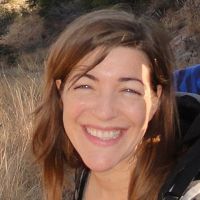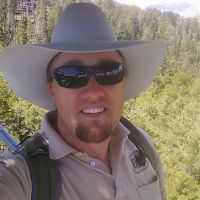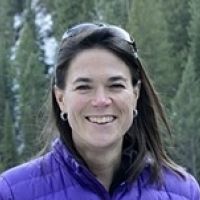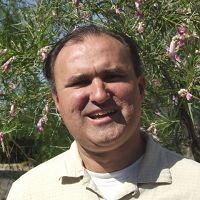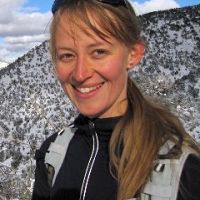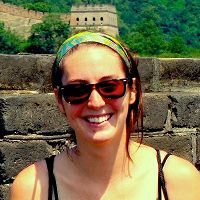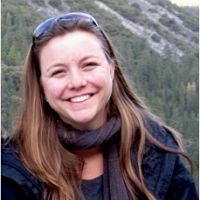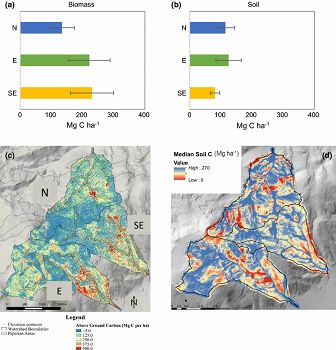Perdrial et al., 2018
A net ecosystem carbon budget for snow dominated forested headwater catchments: linking water and carbon fluxes to critical zone carbon storage
Perdrial J., Brooks P.D., Swetnam T., Lohse K.A., Rasmussen C., Litvak M., Harpold A.A., Zapata-Rios X., Broxton P., Mitra B., Meixner M., Condon K., Huckle D., Stielstra C., Vázquez-Ortega A., Lybrand R., Holleran M., Orem C., Pelletier J., Chorover J. (2018)
Biogeochemistry 138{3): 225–243 Cross-CZO
-
Catalina-Jemez, Luquillo, Reynolds, INVESTIGATOR
-
Catalina-Jemez, INVESTIGATOR
-
Catalina-Jemez, INVESTIGATOR
-
Reynolds, INVESTIGATOR
-
Catalina-Jemez, INVESTIGATOR
-
Boulder, Catalina-Jemez, INVESTIGATOR
-
Catalina-Jemez, GRAD STUDENT
-
Catalina-Jemez, INVESTIGATOR
-
Catalina-Jemez, INVESTIGATOR
-
Catalina-Jemez, STAFF, COLLABORATOR
-
Catalina-Jemez, GRAD STUDENT
-
Catalina-Jemez, GRAD STUDENT
-
Catalina-Jemez, GRAD STUDENT
-
Calhoun, Catalina-Jemez, COLLABORATOR
-
Catalina-Jemez, Shale Hills, GRAD STUDENT
-
Catalina-Jemez, GRAD STUDENT
-
Catalina-Jemez, INVESTIGATOR
-
Catalina-Jemez, INVESTIGATOR
Abstract
a) Above Ground Biomass C (AGB) and b) total soil C stocks, representing the sum of average mineral horizon C stocks and average organic horizon C stocks. Simple error propagation of mineral and organic horizon C stock standard deviations was used to constrain the error on total soil C stock estimates. c) spatial distribution of AGB and d) soil C based on soil depth
Climate-driven changes in carbon (C) cycling of forested ecosystems have the potential to alter long-term C sequestration and the global C balance. Prior studies have shown that C uptake and partitioning in response to hydrologic variation are system specific, suggesting that a comprehensive assessment is required for distinct ecosystems. Many sub-humid montane forest ecosystems in the US are projected to experience increased water limitation over the next decades and existing water-limited forests can be used as a model for how changes in the hydrologic cycle will impact such ecosystems more broadly. Toward that goal we monitored precipitation, net ecosystem exchange and lateral soil and stream C fluxes in three semi-arid to sub-humid montane forest catchments for several years (WY 2009–2013) to investigate how the amount and timing of water delivery affect C stores and fluxes. The key control on aqueous and gaseous C fluxes was the distribution of water between winter and summer precipitation, affecting ecosystem C uptake versus heterotrophic respiration. We furthermore assessed C stores in soil and above- and below-ground biomass to assess how spatial patterns in water availability influence C stores. Topographically-driven patterns in catchment wetness correlated with modeled soil C stores, reflecting both long-term trends in local C uptake as well as lateral redistribution of C leached from upslope organic soil horizons to convergent landscape positions. The results suggest that changes in the seasonality of precipitation from winter snow to summer rain will influence both the amount and the spatial distribution of soil C stores.
Citation
Perdrial J., Brooks P.D., Swetnam T., Lohse K.A., Rasmussen C., Litvak M., Harpold A.A., Zapata-Rios X., Broxton P., Mitra B., Meixner M., Condon K., Huckle D., Stielstra C., Vázquez-Ortega A., Lybrand R., Holleran M., Orem C., Pelletier J., Chorover J. (2018): A net ecosystem carbon budget for snow dominated forested headwater catchments: linking water and carbon fluxes to critical zone carbon storage. Biogeochemistry 138{3): 225–243. DOI: 10.1007/s10533-018-0440-3
 This Paper/Book acknowledges NSF CZO grant support.
This Paper/Book acknowledges NSF CZO grant support.
Explore Further
